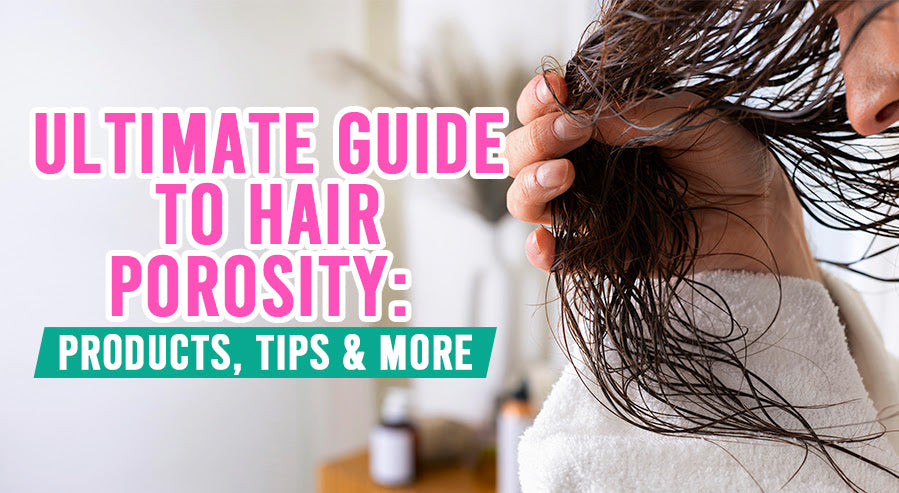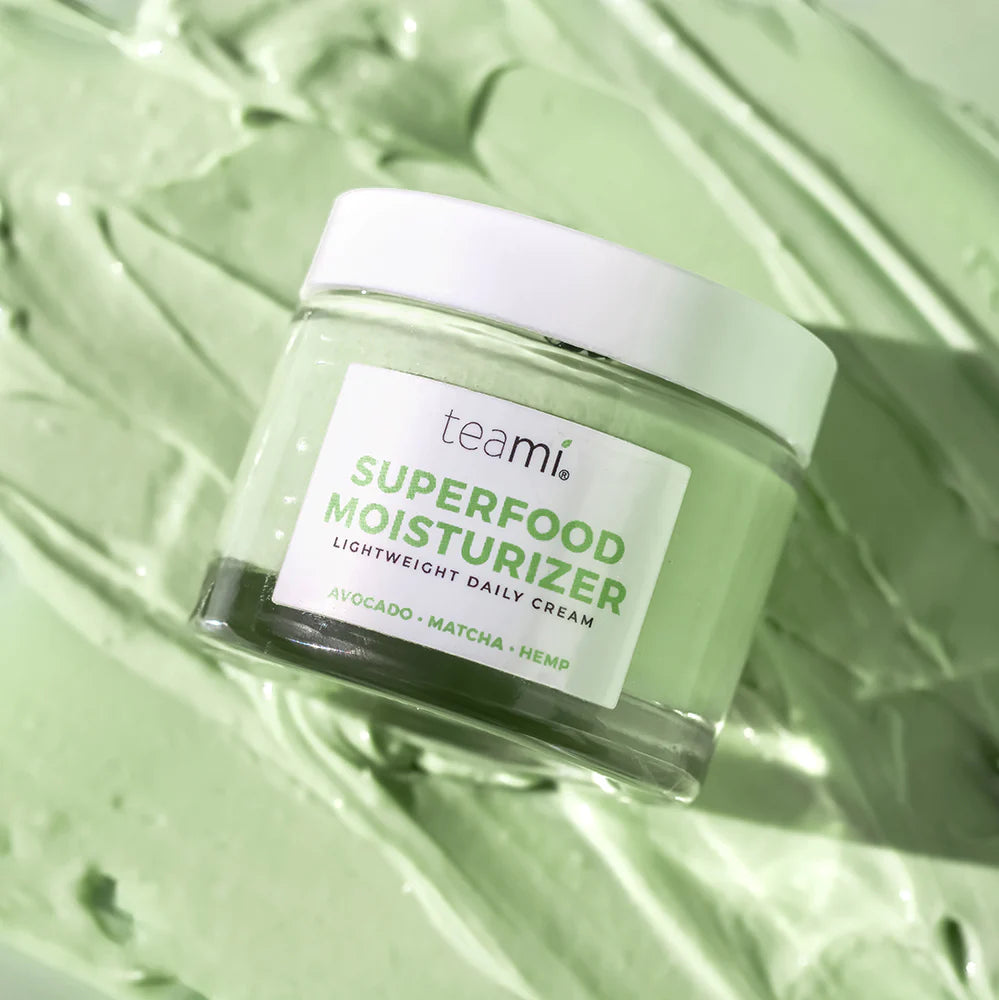Ultimate Guide to Hair Porosity: Products, Tips & More

Hair porosity - how well your strands can absorb moisture - lays the foundation for healthy hair. I'll show you which products and techniques work best for your hair type so you can save time and money on items that don't match your preferences! What you need to start with is recognizing your porosity level first.
Hair porosity can affect everything from product absorption to styling results. Throughout this guide, I'll cover the three porosity types. I'll share must-have products for each type and show common mistakes to avoid. You'll learn about float tests, protein treatments, deep conditioning, and care routines that can deliver results. I'll explain why heat styling, chemical processing, and incorrect product options can damage your hair's natural porosity.
This guide will help you find your hair's needs and achieve the healthy hair you want. You'll no longer waste money on products that just sit on your hair or leave it feeling dry and brittle.
If that sounds good to you, let's jump in and learn more!
Why Does Porosity Matter?
An expensive hair product that people have loved might make your hair look worse. The hair porosity level could've helped you stay away from that disappointment and wasted money!
Your hair tends to work like a sponge. Some sponges can suck up water while others seem to push it away completely - that's how different hair porosity levels work. The way your hair takes in and holds onto moisture can shape the facts about your hair care schedule.
My own experience taught me this lesson. I kept putting thick and creamy conditioners in my hair without any results that helped. My low porosity hair couldn't manage all that product - it ended up looking flat and greasy while feeling weighed down. Everything changed when I started lighter products that actually worked for my hair type.
Your problems with frizzy and dry hair may stem from your porosity levels. High porosity hair soaks up moisture very fast but loses it just as fast. That's why your hair feels nice after conditioning but turns into a mess just a few hours later.

The beauty industry wants you to believe their products can work miracles for everyone. The wrong products for your porosity level will act like a bucket with holes. You can add more and more products, but you won't fix what's actually causing the issue.
Studies have shown that 70% of hair damage happens from unsuitable hair care products and methods. This damage happens because most people don't match their hair products to their actual porosity level. The wrong products can create buildup on your hair (leading to breakage) and endless bad hair days.
Your hair needs different products from what works for your friend or family member. High-porosity hair usually needs heavier products to lock in moisture. Low-porosity hair does much better with lighter products that won't build up and weigh it down.
Temperature has an effect on how your hair responds to different products. Low-porosity hair needs warm water or heat to help open up those hair cuticles and let moisture in. High porosity hair readily accepts products but needs extra help keeping that moisture from escaping.
Low Porosity Essentials
Your strands resist moisture because of the tight and compact structure when you have low-porosity hair. Just picture trying to squeeze some water through a dense sponge - that's what you can see happening with your hair.
The products like to hang out on the surface of your strands instead of actually sinking in. Water beads up on your hair in the shower because those small scales on each strand are lying flat and snug against each other.
Heavy hair products will suffocate your low-porosity strands way too much. Your hair can become weighed down faster and get that unwanted feeling that nobody wants. Instead, you can reach for those light and water-based products that slip between those tight scales.
Heat makes things better when you're deep conditioning low-porosity hair - the warmth helps those stubborn scales open up just enough. The ingredients can sink in properly. Pop on a shower cap or wrap your hair in a warm towel while deep conditioning - you'll see a real change in how your hair feels afterward.

Product buildup creates challenges for low-porosity hair. Those tightly packed strands can trap leftover products, leaving your hair feeling heavy and looking lifeless. You should add clarifying shampoos to your regular schedule - they sweep away all that trapped residue and give your strands a fresh slate.
Low-porosity hair takes forever to dry. Once the water gets trapped inside those tight strands, it takes its sweet time to evaporate. People with low porosity hair can manage their soaking wet strands hours after washing.
Here's an interesting twist, though - your hair actually holds that moisture well once it's there! Those tight scales that make it hard for water to get in also make it tough for moisture to escape, so you might not need to add moisture as often as your friends do.
Your low-porosity hair needs some extra attention when it comes to protein treatments, too. The excess protein can leave your strands feeling stiff and brittle. Since your hair already struggles with absorption, that extra protein sits there on top and creates more problems than it helps with.
Medium Porosity Essentials
Your medium porosity hair can sit right in the sweet find these - not too porous and not too resistant. You'll see that it takes a few minutes to get soaking wet in the shower and dries naturally in about 2-3 hours. That's why people call it the "goldilocks" of hair types.
This hair type will need some regular attention even though it's pretty low-maintenance. People like to get too relaxed with their haircare schedule when their hair seems easy to manage. Don't fall into this trap - your hair will show clear signs of damage and dryness if you slack off too much.
Most hair products will work well for medium porosity hair. There's no need to spend tons of money on expensive treatments or tough routines. You can follow an easy and sulfate-free shampoo and lightweight conditioner for your regular washes. You should watch out for products that could be too heavy and weigh down your strands.

Your hair also works with heat styling and chemical treatments. You can color your hair or use hot tools without being too worried about serious damage. Still, always use a heat protectant, and don't go overboard with the styling tools. Even the healthiest hair has its breaking point.
You can condition your medium porosity hair to reach that perfect balance. After each wash, you can use a light leave-in conditioner to lock in moisture. A deep conditioning treatment once or twice monthly also helps your hair from swinging between too dry and too oily. Your hair will tell you what it needs through how it feels and looks.
Residue can build up on your hair strands over time, and heavy products can actually change your hair's porosity level. You can monitor how your hair responds to different products and adjust your schedule when needed.
High Porosity Essentials
Your strands can absorb the moisture faster but will like to lose it just as fast, which leaves you with dry and brittle hair.
Picture your hair like a sponge that's full of small holes. Water rushes in fast but escapes even faster through these openings. This happens because the small scales on your hair shaft stay lifted instead of lying flat. This lets moisture escape all day long.
High porosity isn't always something you're born with. Regular heat styling, chemical treatments, and even harsh weather gradually lift those small hair scales. This damage can build up over time and makes it tough for your hair to keep moisture locked in.
Your hair dries very fast after washing but still feels dry. Those open cuticles let water escape way too fast. Your strands probably feel rough and appear lackluster (even right after you've conditioned them).

People jump straight to protein treatments as an answer. But loading up on protein can actually backfire. Your strands might end up feeling stiff and brittle from too protein-heavy products. Finding the right balance helps with handling high-porosity hair.
The order of your hair products makes a change for high-porosity hair. Start with a leave-in conditioner and add a moisturizing cream. Then, seal it all in with oil to lock that moisture inside your strands.
A quick cold water rinse works to smooth down those lifted cuticles. This easy trick helps your hair hold moisture much longer, and your strands feel soft and manageable throughout the day.
People with high-porosity hair do well with premium and more nourishing products. Your hair's structure needs that extra moisture and protection to stay healthy. Natural oils and butters are good additions in fighting non-stop dryness.
Perform The Float Test
You'll need just a glass of water and a single strand of hair to test your hair's porosity at home - this easy test will show you how well your hair can take in moisture.
Your hair needs to be completely clean before you can start the test. Use your regular shampoo, but skip the conditioner this time around. After your hair is dry, you can pull out one single strand - that's all you'll need.
The test itself is pretty easy. You can pour some room-temperature water into a glass, just like you'd drink. Then, you can drop that strand of hair into the water. But take it easy - a gentle drop works much better than tossing it in there.
You'll want to watch that strand for about 3-5 minutes to get some reliable results. People rush this part and miss an opportunity to see how their hair behaves in the water.

Your hair's position in the glass can tell you what you need to know. A floating strand means you have low-porosity hair. When your hair drops straight to the bottom, that's high porosity. Hair that's hanging out in the middle shows normal porosity.
This test surprised me the first time around, too (I know it seems weird).
I first judged that I had low porosity hair. But watching the full time showed something different. My strand eventually sank right to the bottom - it turns out my hair was actually high porosity.
Your hair's outer layer structure is what makes this test work. Low porosity hair repels water like a raincoat. High porosity hair soaks up everything like a sponge. Normal porosity hair sits right in between these two extremes.
What Products Suit Each Type?
You need to know how to match some products with your hair porosity because the wrong ones will leave your hair looking dull and lifeless. Your hair's porosity level can determine how well it absorbs and holds moisture, too. Finding the right items makes a positive change in your hair care schedule.
The tight cuticles in low-porosity hair make it hard to soak up moisture. Water-based products will work well for you because they're light enough to penetrate your strands. Heavy oils and butters won't serve you well here - they'll just sit on top of your hair and make it look greasy.
Medium porosity hair types like to have a natural balance - not too picky about products and pretty easy to manage. Your hair readily accepts moisture and locks it in nicely. Try mixing lightweight and gentle leave-ins with medium-weight styling products for the best results. Gel creams seem to work like magic on medium porosity hair.

High porosity hair needs extra attention since moisture escapes from it faster. Rich and creamy products that can fill in the gaps in your hair shaft will be great options. Thick oils and butter-based products will create a protective barrier around your strands - this helps prevent the moisture from escaping.
Heat helps with your deep conditioning schedule - especially if you have low-porosity hair. Pop on a shower cap or sit under a hooded dryer to help those products sink into your stubborn strands - this easy trick has completely changed people's hair care routines.
People use too many products because they think more is better. Your hair can only manage so much at once, and excess product will leave you with gunky and heavy strands. Start with the lighter items first, then gradually add heavier products only if your hair needs them.
Product buildup can affect every hair type. However, hair with low porosity is affected the most. Use a clarifying shampoo once a month to sweep away all that residue and give your products a clean slate to work with. Think of it as your monthly hair care refresh strategy.
Maintain Healthy Hair Over Time
Your schedule deserves some hair care habits that can fit right in! Just like you, everyone tends to dream of having healthy and beautiful hair. Life gets busy, though - and you're juggling work, family, and a million other items. Hair tends to end up at the bottom of your priority list.
You might feel guilty about deep conditioning when you're rushing to get to class or get the kids ready for school. When you skip these steps that help, your hair will become brittle and lifeless and open to breakage. Your hair will start showing signs of neglect sooner than you can think.
You don't need to spend forever in the bathroom for hair. Instead, you can look for ways to blend hair care into what you're already doing. You can deep condition while you supervise homework time. You can apply a leave-in treatment before heading to work. These little adjustments add up to dramatic changes as time goes on.

Bad hair days frustrate everyone - but here's the thing - most of the struggles come from not giving your hair the basic care it needs. Your hair looks its best with steady maintenance.
Your hair needs structure in its care schedule throughout the week. It's just like switching up your workouts to see results. Some days call for gentle cleansing, while others need intensive treatment. You can repair damage and lock in moisture with weekly deep conditioning. Protective styles give your strands a break from styling stress.
Heat tools, chemical processes, and other external factors can also hurt your hair's health. These damaging elements slowly break down your strands over time. You can stay away from long-term damage with heat protection and minimal chemical treatments. Regular trimming stops split ends from creeping up your hair shaft. A hair care schedule can also help protect your hair's future health.
Finding The Perfect Blend
Your hair will look and feel different once you can match your hair care schedule to its porosity level. I made some small adjustments to my hair care schedule - and wow! My dry and brittle strands changed into soft and manageable hair in just a few weeks.
You'll need some trial and error to find what makes your hair type its best (that's completely fine). Your hair process is unique. Each small win is worth celebrating as you find what makes your hair grow.

Self-care helps you feel your best. That's why at Teami, our teas can help improve your sleep, health, and general well-being. Our natural skincare line will give you that radiant glow you have been wanting.
Stop by our store and grab something fresh - you'll love how you'll feel inside and out.
Subscribe to our Newsletter
Subscribe to our newsletter and get 10% off your first purchase
 Instagram
Instagram



























